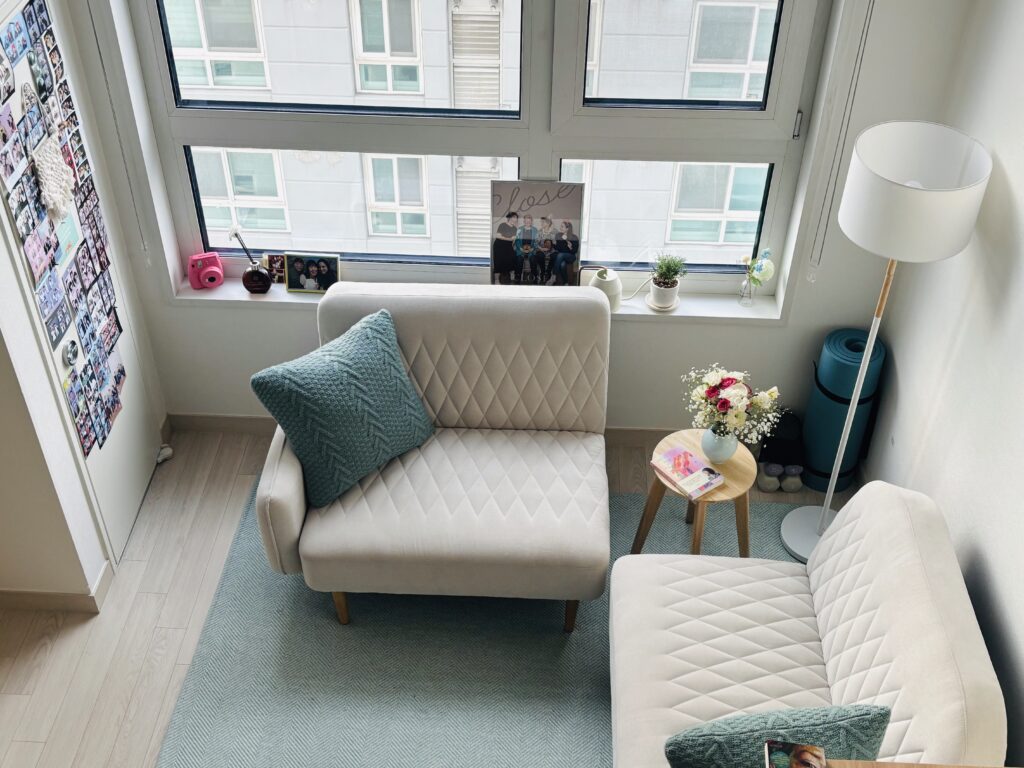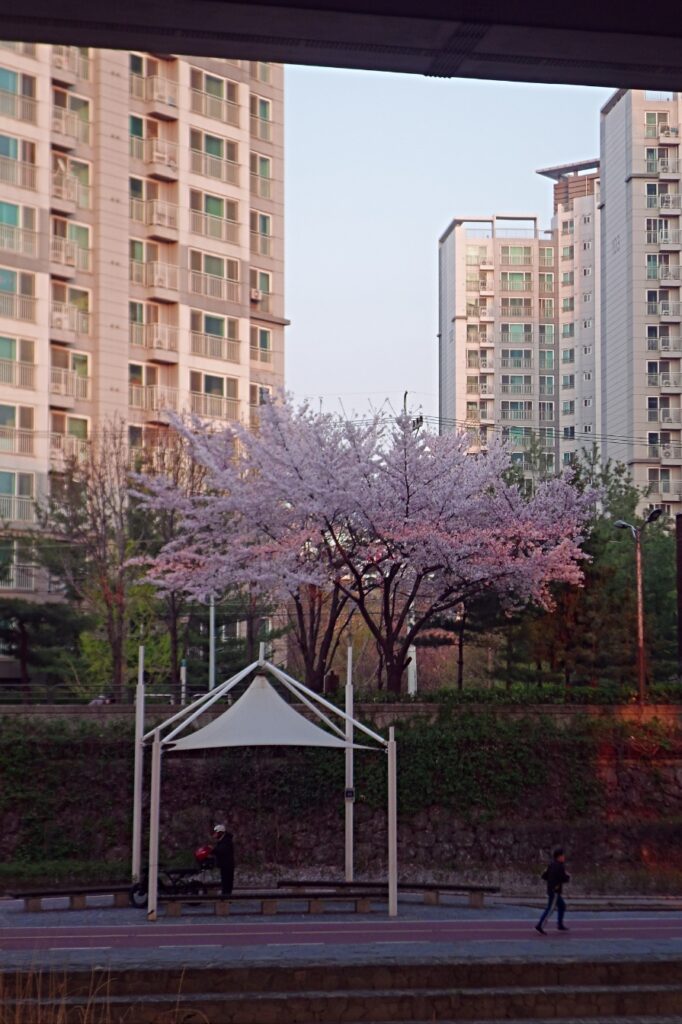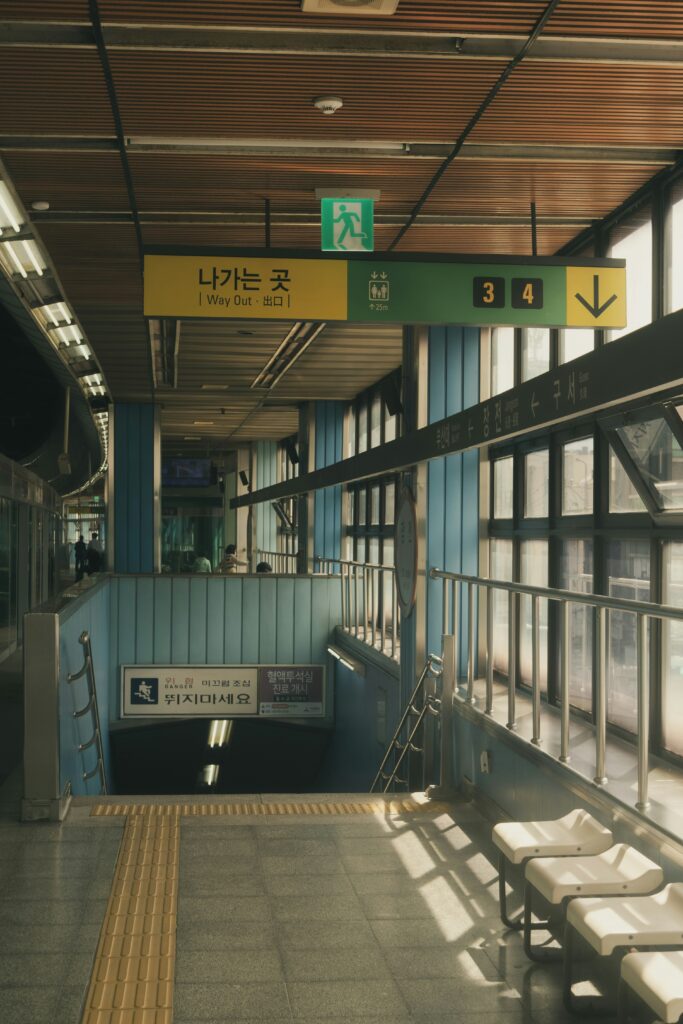COSTS OF LIVING IN SEOUL AS A STUDENT
Maybe you have thought about coming to Seoul as a student to attend a language school or a university. Either way there must be a lot of questions regarding your preparations. In this post I want to share my experiences of studying in South Korea, starting with the financial aspect.
In my case, making the decision to study here wasn’t easy – especially when it came to figuring out the finances. The housing system, eating culture and school tuition are very different from Switzerland and probably a lot of countries out there. Therefore there are several factors to consider when setting your own budget. For now we’ll be diving into three main topics: Housing, Food and Transportation.
Housing Costs


This is probably going to be your biggest expense. I currently live in a so called officetel (오피스텔) close to my university, which is basically a studio apartment in a high-rise building. But there are several options depending on your budget:
Goshiwon (고시원):
- Starting from 200,000 won monthly
- Usually single rooms with shared facilities
- Very low deposit money (보증금)
- Perfect for super budget-conscious students
- But be warned – rooms can be tiny!
A lot of Korean students chose to stay in a goshiwon when having to move to Seoul for their studies. It’s the cheapest option. But it comes with it’s downsides. If you don’t mind staying in a small space with thin walls and instead want to save money on rent, it’s definitely worth checking out. Especially for people who usually spend the whole day outside and only need a place to sleep. I’ve personally never stayed in a goshiwon, but I have a friend who did and could get some insides from her. According to her she wouldn’t chose it again if her budget would allow her. But there was a plus. Some meals were included and the deposit money (보증금) was very low (3,000,000 won).

If you’ve watched the K-Drama “Strangers from Hell” you could get a glimpse of a very scary Goshiwon.
Here are some sites to check out if you’re looking for a Goshiwon: Goshipages (English), Kosirock (Korean)
University Dorm:
- Around 250,000-700,000 won monthly
- Usually shared rooms
- Meal plans often included
- No or very low deposit money (보증금)
- Strict curfews and rules
Most universities offer a student dormitory but they have limited spots. They usually prioritise freshmen or international students. I would recommend checking out if there is an option, after choosing your university. Again, I’ve never lived in a dorm in Korea either, but have a friend who does. It’s definitely a more budget friendly option. And it’s convenient because it’s located close to the university. It’s quite a save option too, due to being surrounded by other (foreign) students who share a similar situation – which on the other hand can be a minus if your main goal is to learn the language. But if you’re lucky and you get along well with your roommate it might make you feel less lonely.
One-rooms (원룸) and Officetels (오피스텔):
- 500,000-800,000 won monthly
- Private bathroom and kitchen
- Deposit money (보증금) can be very high (5,000,000+ won)
- More freedom, but higher costs

If you prefer staying in a more comfortable place by yourself, there’s of course also the option to just rent an apartment. The difference between a simple one-room and an officetel apartment is that you have to pay a higher maintenance fee for things like the elevator, cleaning, trash maintenance, surveillance etc. It can have advantages though like wifi discounts or a parking space – parking in Seoul is very expensive. In both cases it’s important to really be informed before signing any contract. I’ve heard of cases where foreign students paid way too much for their rent.
There are three options how to pay for your place:
- Monthly rent (월세)
- Deposit money only (전세)
- A mix of both
Koreans usually tend to chose the second option (전세) but I wouldn’t recommend it to foreigners because the deposit will be very high and if you’re forced to leave the country because your visa ended, there’s no guarantee that you will get your money back. Also, the whole bank process is a bit complicated. Recently a lot of Koreans themselves start going for paying for rent instead, due to scam scandals.
I would also recommend to compare places online, as prices differ a lot depending on the area. Usually housing in university areas are cheaper than touristic places. Some of the most expensive but also popular areas are Gangsam (강남) or Seongpa (송파). The further away you get from the city centre the cheaper the rent.
Here are some links to compare apartments: Rentberry (English), 다방, 직방, 피터팬의 좋은방 구하기 (only Korean)
I would recommend to compare the prices on the Korean sites, because they are more accurate. Here’s how to read the numbers:
전세 1억9600 = only deposit money for 196,000,000 won
월세 5000/45 = deposit: 50,000,000 won + monthly rent: 450,000 won
월세 500/50 = deposit: 5,000,000 won + monthly rent: 500,000 won
The deposit money system really shocked me. Unlike Switzerland, where deposits are typically three months’ rent and strictly regulated, Korean housing often requires a so called “key money” (보증금). This can range from a few million won to hundreds of millions in some cases! Up to a certain amount it should be insured but usually you only get your money back when the next tenant has signed their contract.
Hidden Costs:
- Maintenance fee (관리비): 90,000+ won monthly
- Utilities: Averaging 20,000 won in normal months, but can hit 50,000 won due to air conditioning or heating
- Real estate agent (부동산) fee: One-time payment depending on your deposit money → Here’s how you can calculate it: 부동산계산기 (enter your deposit money in the left field ex.: 500 for 5,000,000 won and your monthly rent in the right field ex.: 50 for 500,000 won), then press the blue button bellow.

- Internet and TV: Varying deals around 30,000won / Officetel discount: around 10,000won
Some of the fees above can be included in your contract. Therefore be aware of your offers.
Food

My monthly food expenses usually run between 600,000 to 700,000 won. But here’s the thing – it’s not just about groceries vs. restaurants. Korean social life revolves in many ways around food. So, depending on how much of a social person you are it can get quite expensive.
A typical day (example):
- Breakfast at home: 2,000-4,000 won
- Lunch at university cafeteria: 4,500 won
- Afternoon coffee with classmates: 4,500-6,000 won
- Dinner with friends: 15,000-50,000 won
- And maybe some late-night snacks: 5,000 won
Tips for balancing your food expenses:
Grocery Shopping Strategy:
- Local markets or supermarkets for fresh produce
- Big marts like Homeplus or Emart for bulk items
- Online stores for items that aren’t sold in stores and cheaper deals
- Convenience stores for quick meals
- Delivery service
Money-Saving Tips:
- University cafeteria meals are your best friend
- Shopping at local markets or supermarkets
- Using online stores like coupang
- Go for Korean food, not Western food
The only problem with buying groceries in Korea is that usually you have to buy your products in bigger amounts. Because I personally enjoy cooking I still chose to buy fresh produce. Sadly, quite often I had to throw away some of the vegetables or fruits I had bought, because I couldn’t finish them all by myself. I’m still figuring out how to deal with that problem.
Also, things like fruits and milk products are comparatively quite expensive. Fruits are considered a luxury and are often used as gifts. There’s something crucial about Korean culture – meals are social events. There’s this concept called ’rounds’. After lunch (1차), friends might suggest coffee (2차), after dinner (1차) a bar (2차) and another bar(3차) and another(4차)… and then Noraebang… Your budget needs to account for this social aspect!
Transportation

Compared to Switzerland, where a single train ticket can cost more than a meal, Korean public transportation is quite budget friendly.
- Single subway/bus ride: 1,400-1,500 won
- ClimateCard (기후동행카드): 55,000 won monthly for people under 39 62,000 won for people above → optional: Bicycle service in Seoul (따릉이) if you pay an additional 3,000won
- Taxi base fare: 4,800 won, from 10pm to 2am: 5,800won from 2am to 4am: 6,700won (If you’re using a taxi-app (KakaoTaxi) there’s the option to pay in advance. If not, always ask for the cost first, before entering a taxi!)
- Trains: KTX, SRT, Saemaeul Train (Website: Korail, App: KorailApp)
- Express buses (Kobus)
Trains and express buses are only needed when taking a trip outside of Seoul. Trains are the faster option with KTX being the fastest but also most expensive one. Important: You have to make a reservation in advance!
If you want to save money, check out the express buses too. They are very comfortable to travel with.
Pro Tips for Saving on Transportation:
- Get the Climate Card as fast as possible! I used to spend at least 80,000 won per month on public transportation.
- At night, take a night bus instead of a taxi
Conclusion
Total Monthly Expenses (based on my experience):
- Housing: 650,000 won + utilities
- Food: 600,000-700,000 won
- Transportation: 55,000 won + taxi
- Personal/Entertainment: 600,000-700,000 won
- Total: Around 2-2.5 million won monthly
But remember, this is based on my mid-range to upper-range lifestyle – you can definitely spend less or more depending on your choices. The key is understanding these costs before making the move! Good luck with setting your own budget!
In my next post I will focus on the topic apartment hunting.